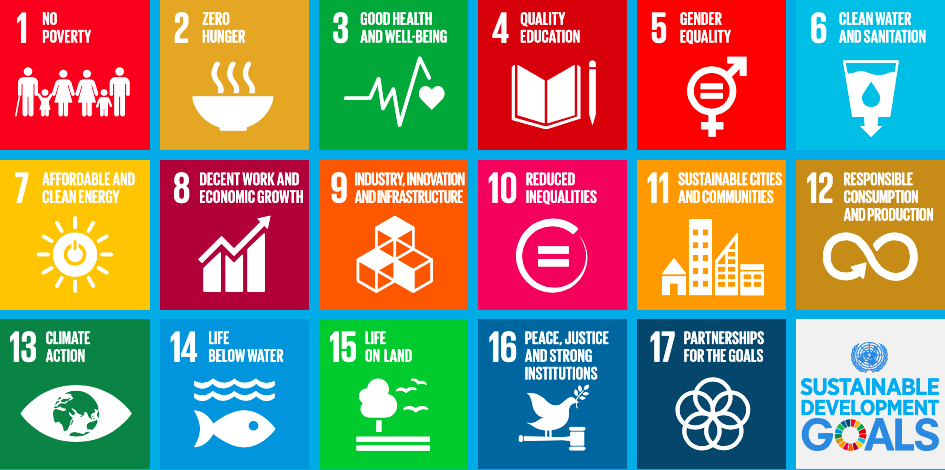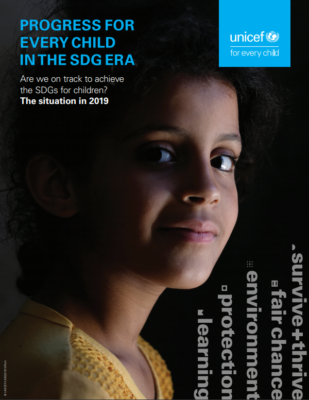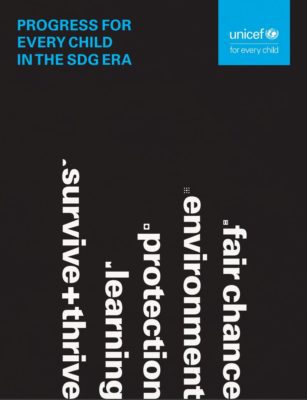Children and the Sustainable Development Goals

The SDGs are universal in scope, and their call to leave no one behind puts the world’s most vulnerable and marginalized people – including children – at the top of the agenda. But two years since world leaders committed to achieving the SDGs, are we on track to achieve the goals for children? Do we even have enough information to know?
Key facts
- The 2030 Agenda includes 17 Global Goals addressing the social, economic and environmental dimensions of sustainable development.
- Attached to the Goals are 169 concrete targets measured by 232 specific indicators.
35 of these indicators are directly related to children. - Most countries have insufficient data to assess whether they are on track to achieve the SDG targets for children.
- Available data show an alarming number of countries needing to speed up progress to reach global targets.
- Within countries, particular groups of children are at greater risk of being left behind such as children from poorer households, those living in rural areas,
or – often – adolescent girls. - UNICEF, as the global leader of data for children, is the custodian for 7 global SDG indicators and co-custodian for a further 10 indicators.
UNICEF briefing notes on SDG global indicators related to children
This series of briefing notes for UNICEF regional and country offices is on SDG indicators related to children. The first note summarises the development and implementation of the SDG global indicator framework and UNICEF’s role in supporting member states to collect, analyse and report on child-related SDG indicators at national and global levels. Briefing notes 2-15 provide detailed information on child-related global SDG indicators for which UNICEF has been identified as custodian, co-custodian, or supporting agency for the purposes of global reporting. Additional briefing notes may be developed in the future covering other global indicators related to children as well as cross-cutting issues related to SDG monitoring
Progress for Every Child in the SDG Era: Are we on track to achieve the SDGs for children? The situation in 2019
The SDGs are universal in scope. Their call to leave no one behind puts the world’s most vulnerable and marginalized people – including children – at the top of the 2030 Agenda. But four years since world leaders committed to achieving the SDGs, are we on track to achieve the goals for children? Do we have enough information to know?
Progress for Every Child in the SDG Era, a report released in March 2018, assessed the world’s performance to date, focusing on 44 indicators that directly concern the 2030 Agenda’s most vulnerable constituency: children.
This brochure revisits the conclusions of that report, updated with 2018 data for a 2019 perspective. Our assessment is sobering.
Progress for Every Child in the SDG Era
The first comprehensive assessment on progress towards achieving the global SDG targets for children, Progress for Every Child in the SDG Era assesses the world’s performance on the SDGs to date, focusing on 44 indicators that directly concern 2030’s most important constituency: children. The analysis reveals that most countries have insufficient data to assess whether they are on track to achieve each of the SDG targets, and where data are available, an astounding number of countries need to speed up progress.
UNICEF’S commitment to data for children is guided by the fact that the SDGs impact every aspect of a child’s well-being.
UNICEF’s work is structured around 5 overarching areas of well-being for every child which are grounded in the 2030 Agenda for Sustainable Development. These five areas are that:
- Every child survives and thrives
- Every child learns
- Every child is protected from violence and exploitation
- Every child lives in a safe and clean environment
- Every child has a fair chance in life
This human rights based approach pursues a vision of realizing the rights of every child, especially the most disadvantaged and responds to the call to “leave no child behind”, so that the rights of every child, everywhere, will be fulfilled. The table below lists the SDG indicators that have been identified by UNICEF, based on these broad areas, as most relevant for monitoring the situation of children under each SDG goal.
Related Resources
- Is every child counted? Status of Data for Children in the SDGs
- UNICEF and the SDGs
- Global Database on SDG Indicators
- Sustainable Development Knowledge Platform
- Inter-Agency and Expert Group on SDG Indicators
- UN SDG Action Campaign

